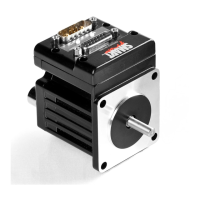Moog Animatics SmartMotor™ Developer's Guide,Rev. L
Page 510 of 909
Adjusting the filter will sometimes allow the SmartMotor™ to handle inertial ratios in excess
of the traditional 5:1 or 10:1 ratios. This "reflected load to rotor inertia" ratio is often cited as
a traditional limit for dependable servo motor applications.
A KS value of 0 produces the least latency, which results in better stability. However, it also
produces the most noise (it may produce an audible white noise).
By increasing the KS value, the latency of the PID differential term is increased. Note that this
can have a negative impact on the damping ability of the KD term. In other words, the tuning
may be less stable with larger values of KS.
EXAMPLE:
KS=3 'Set buffered differential sample rate
F 'Update PID filter
RELATED COMMANDS:
R
KA=formula Constant, Acceleration Feed Forward (see page 495)
R
KD=formula Constant, Derivative Coefficient (see page 497)
R
KG=formula Constant, Gravitational Offset (see page 499)
R
KI=formula Constant, Integral Coefficient (see page 501)
R
KL=formula Constant, Integral Limit (see page 504)
R
KP=formula Constant, Proportional Coefficient (see page 506)
R
KV=formula Constant, Velocity Feed Forward (see page 511)
Part 2: Commands: KS=formula

